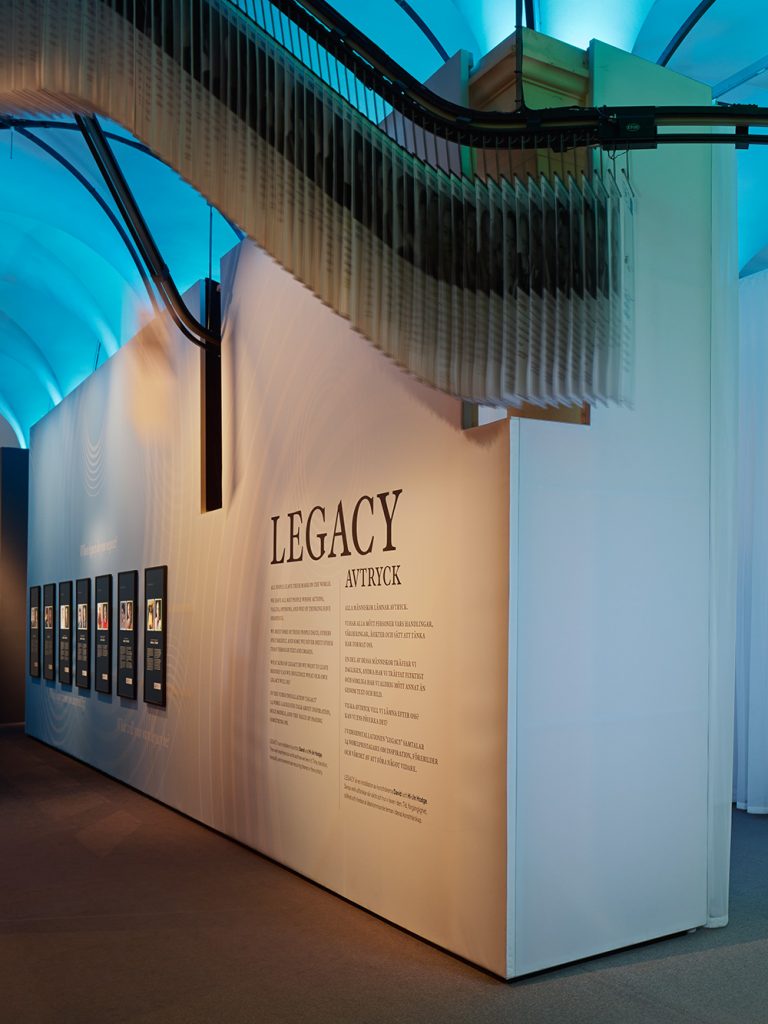When we meet people, they influence us and we in turn influence them. Sometimes that influence can forever change how we see and perceive the world. The exhibition Legacy is about those traces that are left behind, from the will of Alfred Nobel – a document that has left an enduring legacy in cultures far beyond the borders of Sweden – to the Nobel Laureates’ own stories and reflections on the legacies that they both have left and been inspired by.
We want to awaken our visitors’ own thoughts on which legacies that have formed them. We also want to inspire our visitors with the stories of the Nobel Laureates. Most of them have done their work far away from the spotlight, but they have all worked from a common denominator: They have wanted to help us better understand the world, and how all of us can influence and change the world for the better.
Karin Jonsson, curator at the Nobel Museum. .
In one part of the exhibition, the video installation Legacy is shown, where Nobel Laureates discuss the importance of legacies, both personal and professional. One of the participants tells us that one of his greatest role models in science was a professor that he never worked with. But he was still inspired by their way of thinking and solving problems, methods that made such an impression of him that he in turn could use them for problem solving in other fields.
Maybe the best legacy that we can leave, is a world that is better than the one that we have inherited. In another part of the exhibition, the artwork Hope is shown, where we get a sense of how the inheritance from the past can give hope for the future. The legacy that Alfred Nobel left was an encouragement and a call for hope. The problems that humanity is faced with will be handled and solved in new ways, by a new generation of problem solvers.
The exhibition also shows Alfred Nobel’s last will and testament in public for the first time. Nobel was against inherited fortunes that he meant contributed to the laziness of humanity. The will was an ingenious way of solving this dilemma. The inheritance, in the form of a prize, would reward those who have made themselves worthy by way of their work.
The exhibition is a collaboration between the Nobel Museum and the artists David Hodge (b. 1955) and Hi-Jin Kang Hodge (b. 1974). The video installations are based on interviews that the artists made with Nobel Laureates in San Francisco, New York and Stockholm.
In 2010, as a part of the exhibition “The Missing Peace – Artists Consider the Dalai Lama”, their installation Impermanence was shown. David and Hi-Jin has also exhibited the pieces Spinning at Fotografiska and Unspoken at Dansmuseet.
The exhibition is produced in partnership with EF.
